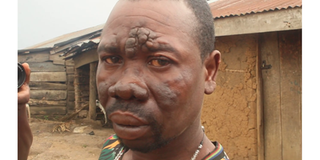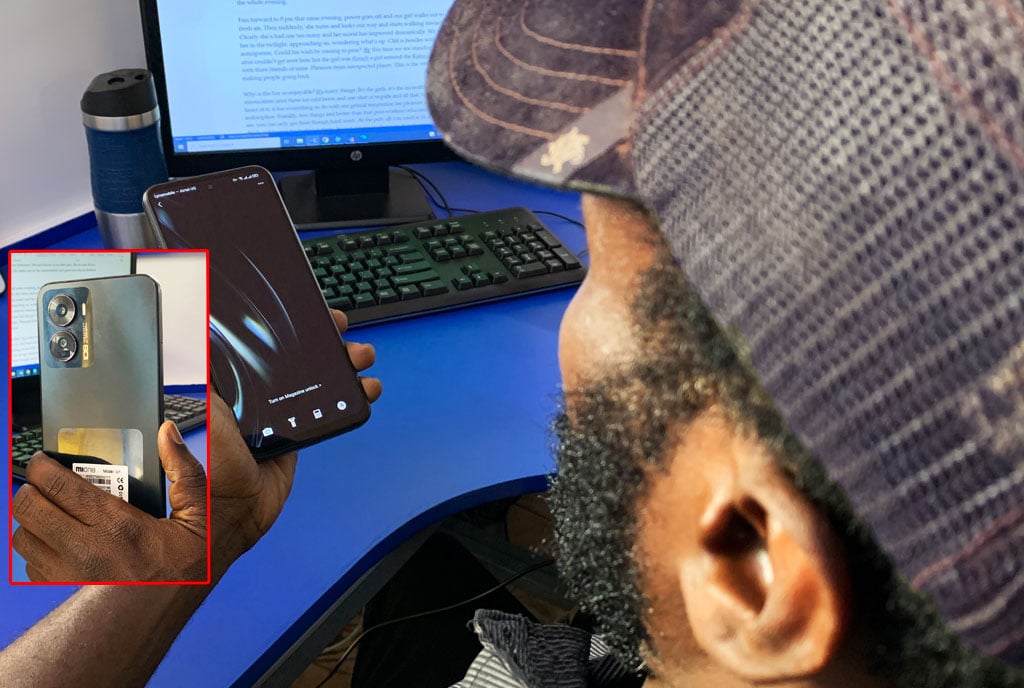Uganda’s leprosy cases on the rise- WHO

Mr Tadeo Lukooya, one of the victims of leprosy on Buyiga Island in Mpigi District. PHOTO | BRIAN ADAMS KESIIME
The World Health Organisation (WHO) has warned of an increase in the number of Ugandans suffering from leprosy –a disease that disfigures legs and arms of the patient, and causes nerve damages.
“Between 2017 and 2022, the country registered an increase in the number of leprosy cases from 121 to 518 with 13 percent of these cases in children,” Dr Yonas Tegegn Woldemariam, the WHO country representative said.
“The growing trend could be due to retrogression on leprosy control services and the ongoing community transmission. There is an urgent need for evidence based innovations to save lives,” he added.
Dr Yonas also said the WHO would continue to support Uganda with “leprosy treatment and preventive therapy as we work with member states towards tuberculosis (TB) vaccine”.
He made the remarks during the National TB and leprosy Science Summit in Kampala which is being held under the theme “Harnessing local research and innovation on TB and leprosy to shape national policy and practice to end TB and leprosy in Uganda.”
Dr Charles Olaro, the director for curative services at the Health Ministry, while commenting on the remarks by WHO country representative, said they would use the summit to generate new ideas to effectively combat the disease.
“More than 50 percent of our leprosy cases are being detected from West Nile. So we are looking for what we can do differently so we don’t continue having that, we can reduce these numbers. Less six districts are still reporting leprosy cases,” he said.
Dr Stavia Turyahabwe, the head of TB and Leprosy control programme at the Ministry, also linked the increase in numbers to increased diagnosis services.
“The numbers went up with the Community Awareness, Screening, Testing, Prevention and Treatment to end TB/Leprosy (CAST) campaign. We saw over 500 Ugandans who were having active leprosy disease and we initiated them on leprosy treatment,” she said.
“This is because we were able to reach out to where they were. Leprosy is what we overcame as a public health threat and the attention to the disease is not as high as the attention accorded to other high burdening diseases. The burden of leprosy is low but there are still people suffering from leprosy,” she added.
In a 2019 study report by Freda Loy Aceng and colleagues, the researchers there was a need for a special focus on Northern region as regards leprosy fight.
“There was a decreasing trend in leprosy new cases detection in Uganda during 2012-2016; however, the declining trends were not consistent in all regions. Northern region consistently identified more leprosy cases compared to the other regions. We recommend evaluation of the leprosy surveillance system to ascertain the leprosy situation,” the report reads.
However, for TB, Dr Turyahabwe said during the CAST campaign in 2022 alone, up to 94000 Ugandans were found with TB and started on treatment.
“This (campaign) has helped us identify the gaps in identifying people falling ill with the disease. This helps to reduce transmission. The biggest burden of TB is in Northern region –Acholi, Lango, West Nile and a bit of Bunyoro,” she said.




